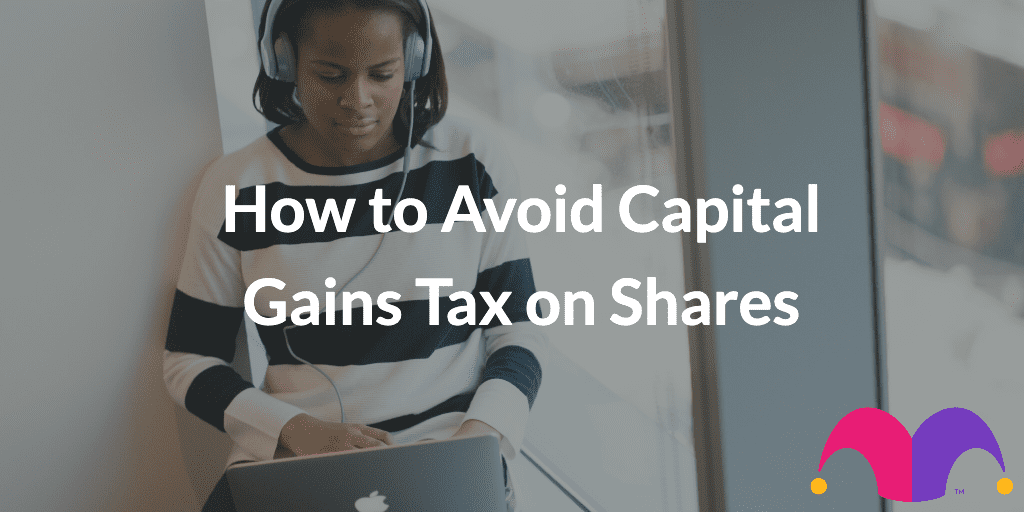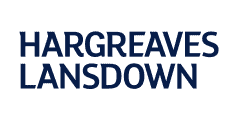An often overlooked expense in the world of investing is taxes. That’s why many investors are keen to know how to avoid UK capital gains tax (CGT) on investments.
The current rate of CGT on shares is either 10% or 20%, depending on your taxable income level. While this is historically low, there is always the possibility that rates will move higher at some point. It’s prudent to make sure your portfolio doesn’t have a large amount of unrealised gains that could potentially become liable to CGT in the future.
Fortunately, there are several methods available to lower your CGT bill. Let’s explore some of these strategies and highlight one popular way you may want to avoid.
1. Use a tax-efficient investment account
Keeping all your investments in either an Individual Savings Account (ISA) or a Self-Invested Personal Pension (SIPP) is probably the easiest way to invest and avoid CGT.
A Stocks and Shares ISA allows you to invest up to £20,000 per year, with all income from dividends and capital gains remaining 100% tax-free.
Great for frequent investors or those who prefer funds
Hargreaves Lansdown Stocks and Shares ISA *
| Trading Commission | £5.95 – £11.95‡ |
| Account Management Fee | Up to 0.45%† |
- Pros & Cons
- Fees & Charges
Pros
- Plenty of investing resources and research material
- Cheap trading costs for active investors and free fund dealing
- Low platform fees for smaller portfolios
- £100 of free trades for new and existing clients.
Cons
- Expensive fees for fewer trades
- Structure of fees can be complicated
- Limited trading tools
Monthly subscription fee: £0
Equities custody charge: 0.45% (capped at £45/year)
Fund management charge:
On the first £0 to £250,000 = 0.45%,
On the value between £250,000 to £1m = 0.25%,
On the value between £1m and £2m = 0.1%,
On the value over £2m = free
UK shares & ETFs: £11.95 (for 0-9 trades in previous month), £8.95 (for 10-19 trades in previous month), £5.95 (for 20+ trades in previous month)
US shares & ETFs: £11.95 (for 0-9 trades in previous month), £8.95 (for 10-19 trades in previous month), £5.95 (for 20+ trades in previous month)
EU shares & ETFs: £11.95 (for 0-9 trades in previous month), £8.95 (for 10-19 trades in previous month), £5.95 (for 20+ trades in previous month)
Fund trades: £0
Spot + FX fees: 1%
Telephone dealing charge: 1% of trade value (£20 min/£50 max)
A SIPP is similar, except you can invest up to £40,000 per year. On top of this, all contributions made are tax-deductible. However, there is a critical difference. Once you add money to a SIPP, you cannot withdraw it until the age of 55 (57 as of 2028). Furthermore, any withdrawals beyond 25% of the portfolio are taxed as regular income.
In other words, an ISA is tax-free, while a SIPP is tax-deferred. Both methods are very popular methods of tax relief and have their pros and cons.
Some specialist investment schemes called venture capital trusts (VCT) and enterprise investment schemes (EIS) also allow you to avoid or defer capital gains tax. But they are subject to several restrictions and only offer a very narrow field of potential investments.
2. Use a jointly-owned investment to maximise CGT allowance
Everyone has an annual exemption to capital gains tax called a CGT allowance. Once the tax year ends, you get a new allowance and any unused allowance from the previous year disappears. Therefore, to ensure it’s not wasted, it makes sense to use as much of your CGT annual allowance each tax year as you can.
That’s why it can make sense to jointly own an investment with a spouse, partner, family member, or friend. Why? Because in a joint investment, all gains or losses are assumed to be due 50% to each participant. In other words, it spreads any profits over two CGT allowances instead of one.
Even if you’ve already invested as an individual, you can still use this method, particularly if you’re married. Typically, gift assets are treated as a disposal for UK tax purposes. However, for spouses, gifts are made at cost instead. If you have shares with taxable gains that you wish to sell, you can first put them into joint name with your husband or wife. This effectively gives half the shares to that spouse at cost. This is known as gift relief.
If you then sell the now jointly-owned holding, there are two potential benefits. First, the gain is split into two. And second, two CGT annual allowances are available, each against half the income.
Variations on this method include considering the marginal income tax situations of the spouses or other joint owners.
UK CGT is calculated by reference to total income in the tax year. Where one owner is in a much higher rate taxpayer bracket than the other, it could pay to split the holdings unevenly. By having more of the holdings in the name of the lower-rated taxpayer spouse, the couple could lower their total amount of CGT due.
This works with spouses because of the ability to transfer at cost. The exact inequality desired can be decided once the potential gain is known. However, this tactic might not work with unmarried joint holders. This is because any shift in the holding would cause disposal.
3. Sale and repurchase with tax-efficient accounts
Another method of avoiding CGT on shares is sale and repurchase.
Here the idea is to realise a gain or loss on some shares by selling and perhaps making use of that year’s CGT allowance, all while retaining ownership.
This is done by raising the base cost of the shares via the annual CGT exemption to mitigate the capital gain on ultimate disposal. It could also be to create a loss to set off against other realised gains in the year.
This process used to be called bed & breakfasting. Up until 1998, it was possible to use this method to sell a share and then repurchase it the next day, with only a small risk of the market going against you.
A 30-day rule was introduced in 1998 that ended this loophole. Selling shares and buying them back 30 days later greatly raises the risk of the stock price moving significantly against you while you’re waiting.
The overall strategy is still sound for those who plan ahead, however. Techniques have evolved over time to get around the 30-day rule.
You can sell some shares and then repurchase them immediately with an ISA or SIPP. This is sometimes referred to as bed & ISA and bed & SIPP. The repurchased shares are protected by these tax-efficient accounts. Any losses from the initial sale can still be used to offset any realised gains.
However, as previously mentioned, these accounts have contribution limits. Therefore, this method may not be available if you have already used your allowances for these products.
4. Sale and repurchase with a spouse
Another method, if you own the shares solely, is to sell them in the market (creating the gain). Your spouse can then simultaneously repurchase them in the market to avoid any price movement. Your spouse then transfers the shares back to you (if that’s desirable), in effect at their repurchase price.
In this instance, neither of you makes a chargeable gain or loss.
This method of avoiding CGT on shares can be done with an unmarried partner or other person, although with a slight additional problem. After the simultaneous repurchase in the market, the other person has to transfer the shares back to the original holder at market value because of the gifts rule.
That’s no problem if the market price is roughly the same. If it has moved substantially, however, the second person creates a taxable gain or loss for themselves.
One final but very important point on the methods that rely on a spouse or other party. The suggestions here are purely from a tax mitigation point of view. However, there may well be personal considerations that have priority over tax matters before entering into any such arrangements.
5. Sale and repurchase using investment classes
This method of avoiding CGT on shares requires only one person and works best with certain types of investment. The identification rules for matching sales and purchases of shares refer to those of the same class. In practice, this means identical shares.
However, many types of nearly identical investments are deemed to be different classes for CGT purposes.
A good example is an index tracker. One tracker, for CGT purposes, is not the same as another from a different fund manager. This is the case, even though technically, they may be pretty similar financial products.
Therefore, if you are showing gains on one tracker and wish to use your annual CGT exemption, you could sell enough to use your annual allowance and then, with the proceeds, invest in a different tracker with a similar specification.
You end up owning a similar investment, but at the current market price. This raises the base cost and reduces any future CGT. You would do this each tax year when gains exist, continually uprating the cost.
The same principle applies to any two investments that are closely correlated yet not the same for CGT identification purposes. This is most likely to be the case with open-ended funds or investment trusts. It would be hard to find individual shares that are so closely correlated.
6. Avoid spread betting
An increasingly popular way to avoid CGT liability is to use spread betting. This is considered akin to gambling by HMRC, so no CGT is levied on any profits made. The exception is if it becomes your main source of income. In that case, it is regarded as a trade and liable to income tax.
However, spread betting can be extremely risky. It often involves the use of borrowing, and you can become very exposed to even small price movements. Most people that spread bet tend to lose money overall.
That’s why you might want to consider alternative methods when thinking about avoiding CGT on UK shares.
Please bear in mind that taxation is a complex and nuanced area. If you are in any doubt about your personal tax situation, you may require professional advice, especially where larger sums are involved.
Please note that tax treatment depends on the individual circumstances of each client and may be subject to change in future. The content in this article is provided for information purposes only. It is not intended to be, neither does it constitute, any form of tax advice. Readers are responsible for carrying out their own due diligence and for obtaining professional advice before making any investment decisions.

